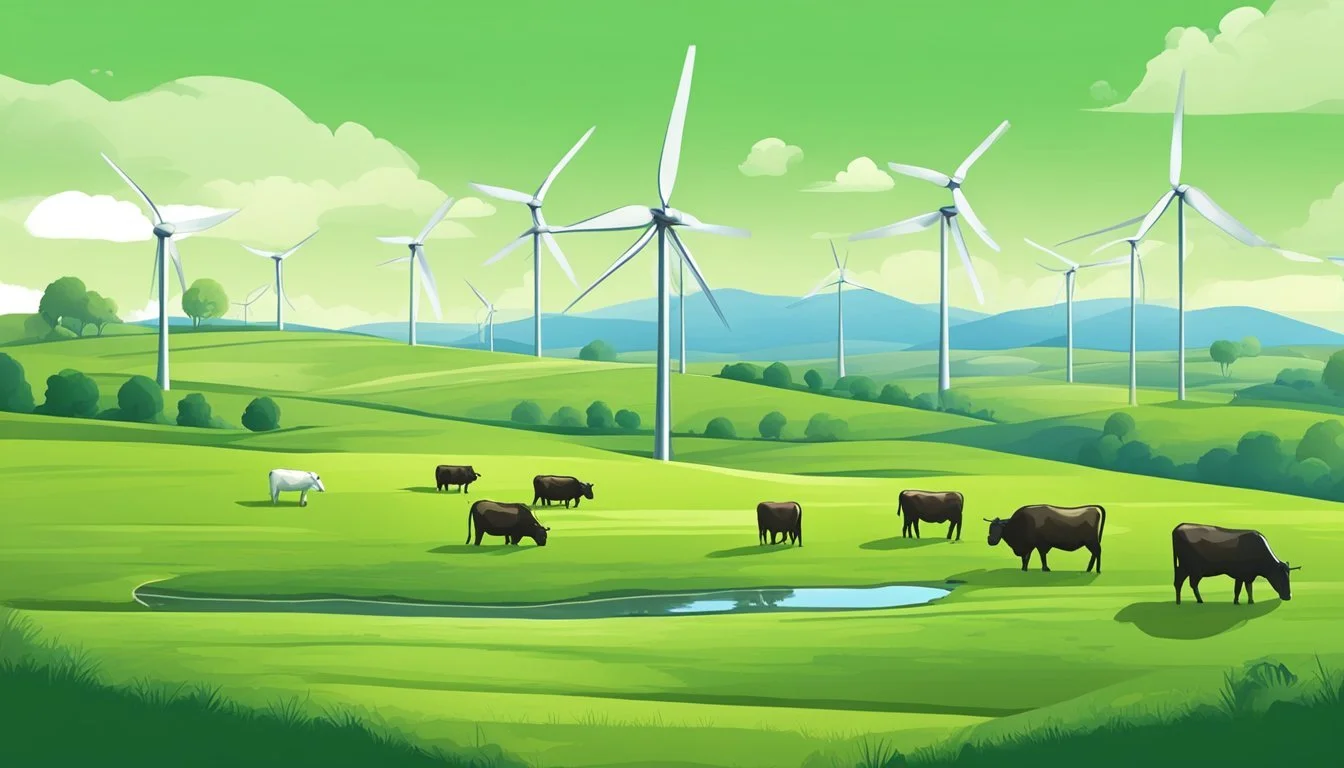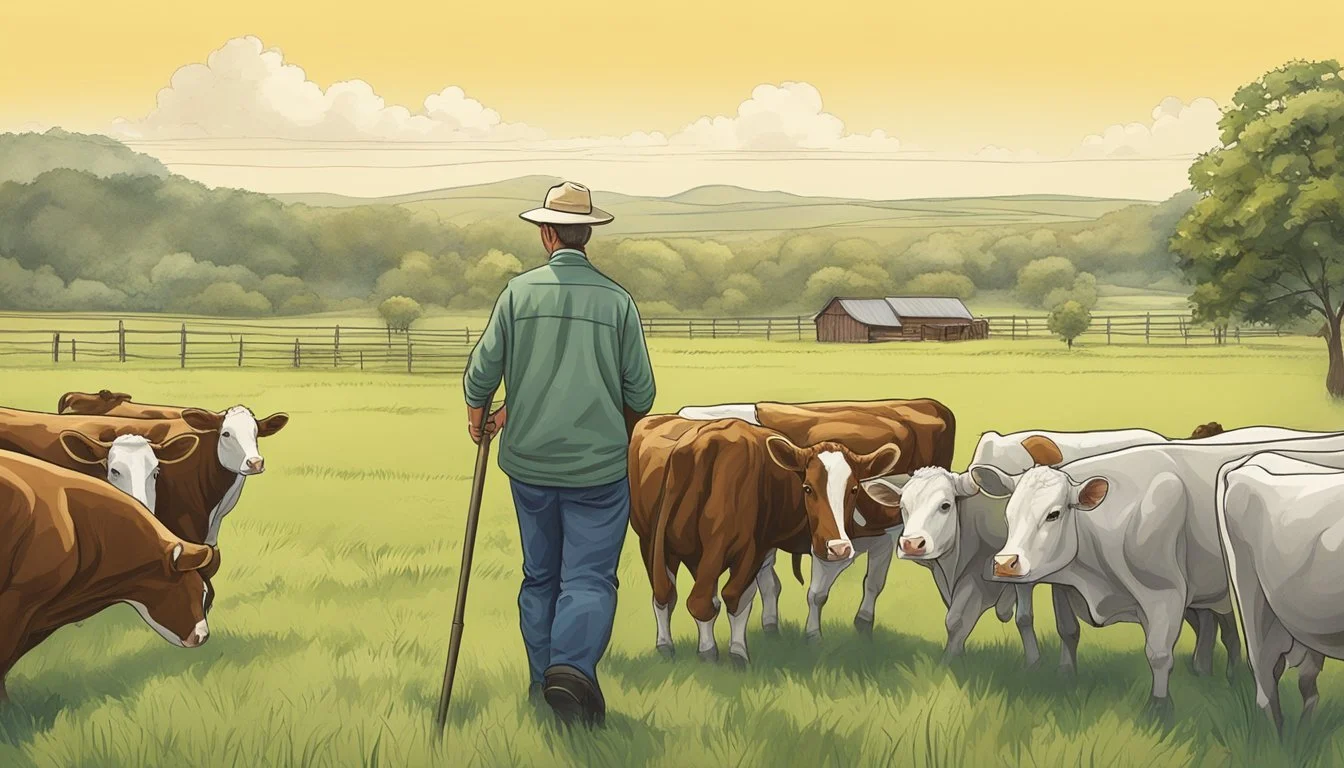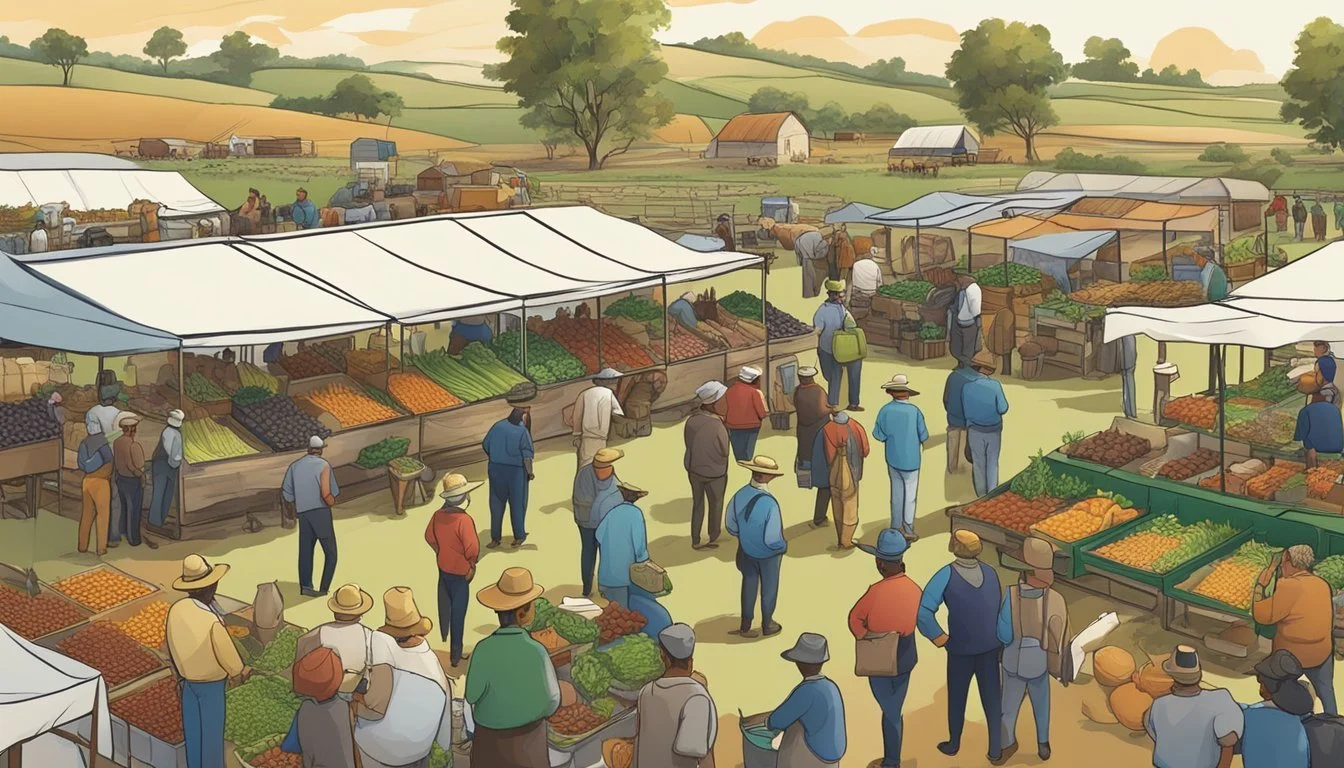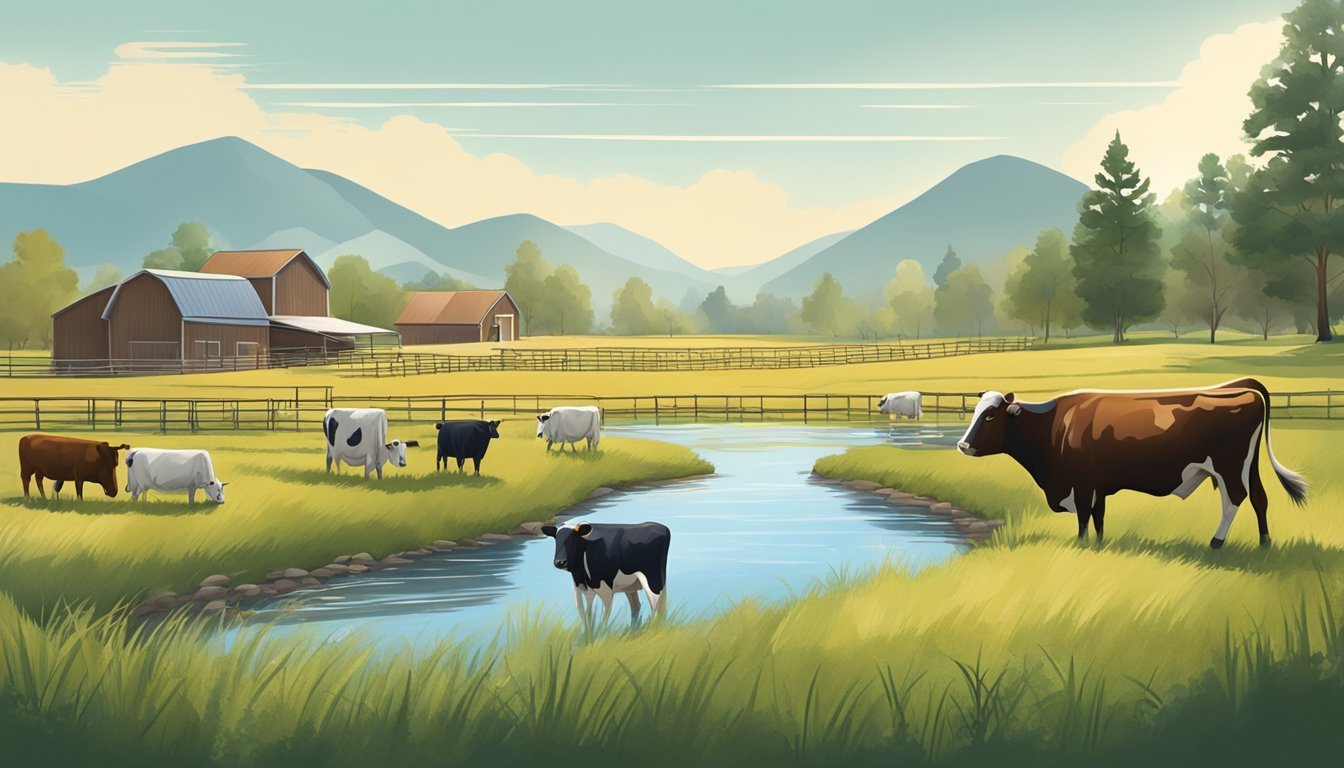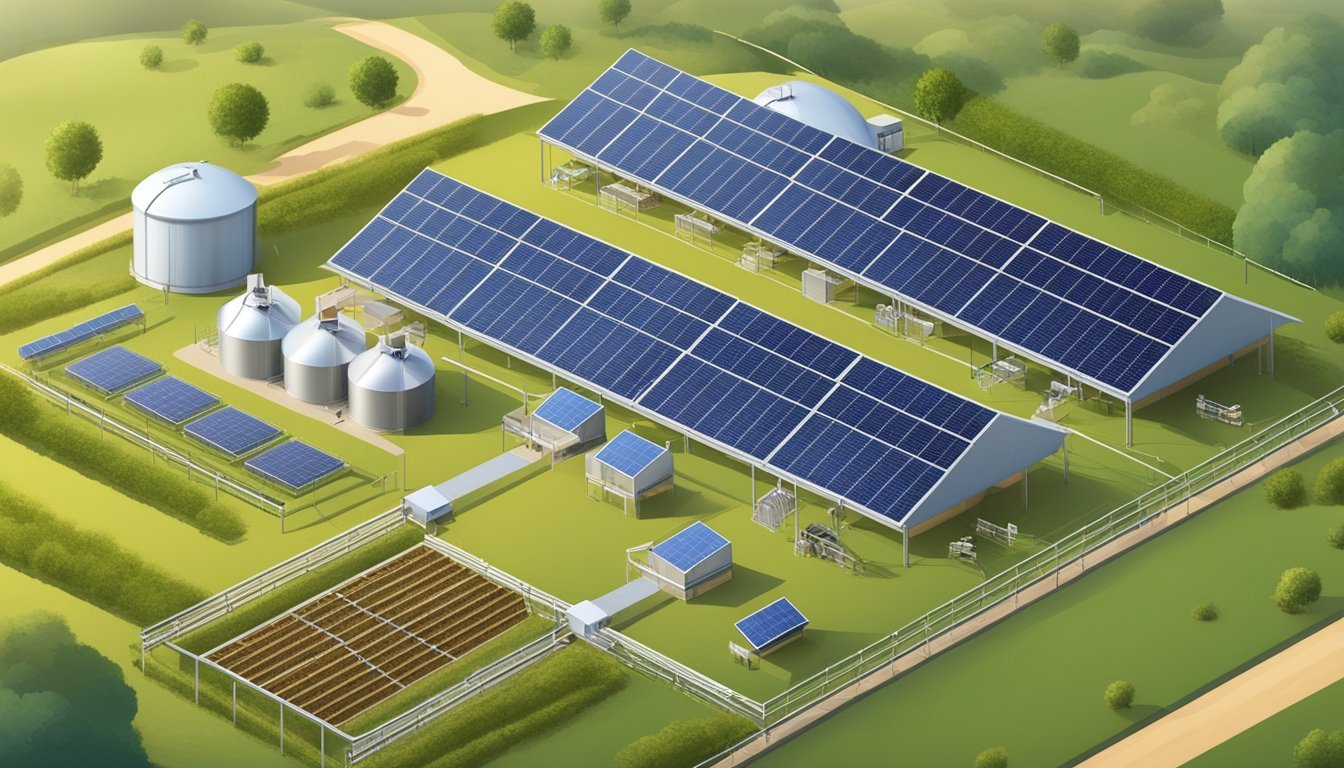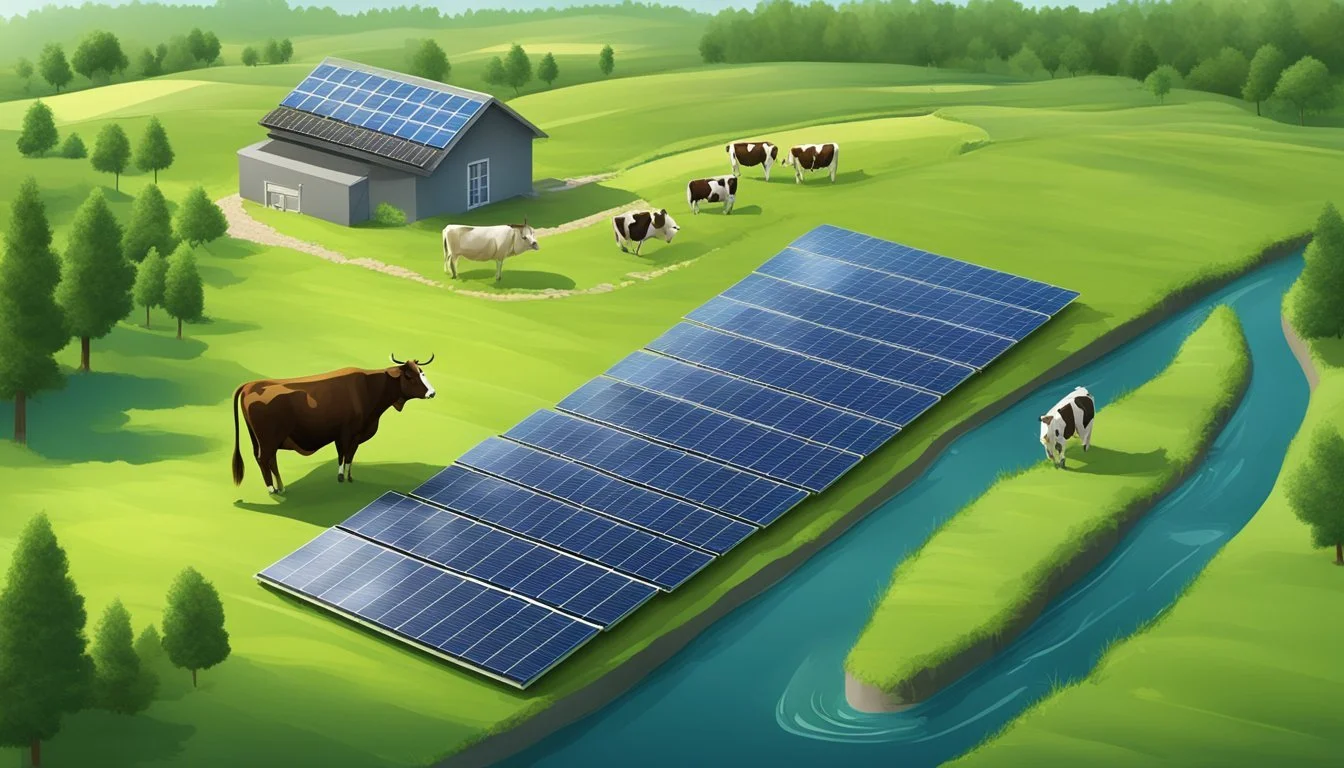How do I Maintain a Sustainable Cattle Farming Operation?
Essential Strategies for Eco-Friendly Ranching
Maintaining a sustainable cattle farming operation is a multifaceted endeavor that demands careful attention to environmental health, animal welfare, and economic viability. It involves the adoption of practices that collectively reduce the environmental footprint while nurturing the land and ensuring the long-term productivity of the cattle farm. Sustainable cattle farming hinges on the efficient management of pasturelands, the implementation of regenerative agricultural techniques that recycle nutrients, and the minimization of harmful emissions.
As the cattle industry evolves to meet the rising demand for beef in an environmentally responsible manner, farmers are increasingly turning to sustainable approaches that balance productivity with ecological stewardship. This includes practices like rotational grazing, where cattle are moved between pastures to allow vegetation to recover, and the integration of livestock and crop production systems, which can enhance soil health and biodiversity. Inherent in these strategies is a deep understanding of the land's potential and limitations, an assessment of natural resources such as soil quality and water availability, and a commitment to maintaining a symbiotic relationship with the local ecosystem.
Sustainable cattle farming also extends to the social and economic realms, prioritizing community involvement and fair labor practices, alongside the responsible stewardship of livestock. Farmers looking to maintain a sustainable operation can benefit from forging relationships with local agricultural experts and investing in ongoing education in sustainable practices. This holistic approach ensures the long-term health of the cattle farming operation, securing its role in the community and the greater agricultural industry.
Understanding Sustainable Cattle Farming
Sustainable cattle farming is a critical component of modern agriculture, aiming to balance environmental stewardship with economic viability. This section explores the foundational concepts of sustainability in cattle farming, why such practices are essential, and the role farmers play in maintaining healthy ecosystems.
Defining Sustainability in Cattle Farming
Sustainability in cattle farming encompasses a series of practices designed to minimize environmental impact while ensuring the long-term economic viability of farms. This involves strategic pasture management, which reduces feeding costs and enhances soil quality by natural means. Implementing sustainable agriculture methods, cattle farmers can improve their land's ability to capture carbon dioxide, benefiting the environment.
Importance of Sustainable Practices
Sustainable practices are not just environmentally sound, but they also offer economic benefits. By embracing environmental stewardship, farmers contribute to the conservation of resources. Sustainable cattle farming has the potential to meet global meat demands more efficiently, optimizing production systems, and reducing waste, thus ensuring high-quality meat production with minimal resource depletion.
The Role of Cattle Farmers in Ecosystems
Cattle farmers play a pivotal role in maintaining and improving ecosystems. A sustainable approach to cattle farming can positively impact communities by infusing local economies and enabling the recirculation of funds within regions. Through careful choice of livestock breeds and responsible grazing management, farmers can foster biodiversity and nurturance of ecosystems, proving that agriculture and environmental health can coexist synergistically.
Best Practices in Grazing Management
Effective grazing management is pivotal in maintaining a sustainable cattle farming operation. It optimizes pasture productivity, supports animal health, and protects the environment. Below are specific strategies for managing grazing practices with precision and care.
Rotational Grazing and Rotation Patterns
Rotational grazing involves dividing grazing lands into smaller areas called paddocks and moving livestock between them systematically. This method simulates natural grazing patterns, allowing vegetation in rest paddocks to recover and regrow. An optimal grazing plan should include a rotation schedule that accounts for the growth rate of the pasture and the nutritional needs of the cattle. Frequency and duration of grazing should be adjusted seasonally to maintain grass vigor and pasture health.
Maintenance of Grazing Lands
The upkeep of grazing lands is essential for the longevity of a pasture-based system. Maintaining a diverse mix of plants can enhance the soil structure and provide a balanced diet for the livestock. Soil fertility should be monitored and maintained, employing soil amendments as needed based on soil test results. Effective grazing management also includes managing water resources responsibly and ensuring that the physical infrastructure, such as fences and water troughs, is in good condition and aptly placed to support rotational grazing patterns.
Preventing Overgrazing
To avoid overgrazing, it's necessary to monitor the height of forage before and after grazing. Overgrazing damages the grass sward, impairs root growth, and reduces the land's productivity and ability to recover. Implementing adequate rest periods for paddocks ensures that the plants have time to rejuvenate. The number of animals and the duration of grazing should be carefully managed — heavier stocking rates may lead to shorter grazing periods and longer recovery times, whereas lighter rates allow for more flexibility. The goal is to balance animal load with pasture growth to maintain consistent pasture coverage and quality.
Environmental Considerations
Maintaining a sustainable cattle farming operation involves careful consideration of its environmental impact. The following subsections detail how farmers can address climate change, protect biodiversity, and enhance soil health to ensure their practices contribute positively to the environment.
Climate Change and Cattle Farming
Cattle farming is intricately linked to climate change through greenhouse gas (GHG) emissions, particularly methane and carbon dioxide. To mitigate these effects, farmers can adopt practices such as regenerative agriculture to maintain and improve carbon storage in their soils. Targeted grazing management reduces the overgrazing that can lead to desertification, consequently diminishing the land's ability to sequester carbon.
Wildlife Conservation and Biodiversity
Sustainable cattle farming practices must include measures to protect wildlife habitats and biodiversity. Establishing wildlife corridors, preserving native vegetation, and maintaining wetlands within pasture ecosystems contribute to conservation efforts. These actions support various species, help to maintain ecological balance, and can even benefit the farm by controlling pests naturally.
Soil Health and Carbon Sequestration
Healthy soil is a pivotal component of any sustainable cattle operation, with the dual benefit of supporting pasture productivity and acting as a critical sink for sequestering carbon. Implementing rotational grazing, cover cropping, and minimizing tillage are strategies that maintain soil structure and organic matter. This approach not only mitigates soil erosion and pollution but also enhances the capacity of soils to capture and hold carbon, playing a role in reducing overall GHG emissions.
Animal Health and Welfare
Maintaining a sustainable cattle farming operation hinges on the pillars of ethical livestock management, adherence to animal welfare standards, and proactive disease management to ensure herd health. These practices are intertwined and essential for the overall well-being of the livestock, which in turn contributes to the sustainability and productivity of the operation.
Ethical Livestock Management
Ethical livestock management involves practices that respect the behavioral needs of cattle and provide a high standard of living. This includes offering adequate shelter, space, and nutrition. Through the strategic use of resources, beef producers can improve their management systems to address the unique environmental and biological needs of their cattle, thereby promoting physical and psychological well-being.
Animal Welfare Standards
Adherence to animal welfare standards is not only a moral responsibility but also a benchmark for farming quality. Evidence-based practices in the industry can enhance welfare outcomes, maintaining robust health in cattle. These standards often incorporate comprehensive assessments of animal behavior, health, and productivity, ensuring that welfare is measurable and continuously improved.
Disease Management and Herd Health
Effective disease management and prioritizing herd health are crucial for sustainability. Implementing a stringent health management regimen can lead to early detection and treatment of illness, thereby averting outbreaks that could detrimentally impact the entire herd. Additionally, health technologies and vaccines play a critical role in ensuring disease prevention and should be integrated within the health management protocols for cattle.
Economic Aspects of Sustainable Farming
The economic viability of sustainable cattle farming hinges on balancing profitability with efficiency, diversifying revenue streams, and implementing sound long-term financial planning.
Profitability and Efficiency
Sustainable cattle farming must prioritize profitability without sacrificing the principles of sustainable agriculture. Focusing on the production of beef as a high-quality protein source, one must measure the efficiency of resource use and how it affects the bottom line. Improving feed efficiency, for instance, can reduce costs and increase the rate of weight gain in cattle, directly impacting profitability.
Diverse Revenue Streams
To buffer against market fluctuations, sustainable cattle farms should explore diversified revenue streams beyond just beef production. This can include the sale of organic manure, participation in agritourism, or offering pasture-raised dairy products. A multiplicative effect on local economic activity is a testament to how these streams can bolster a farm's economic resilience.
Long-term Financial Planning
Effective financial planning is essential for the long-term economic benefits of a sustainable cattle operation. Anticipating market trends, adhering to sound budgeting practices, and investing in cost-saving measures can mitigate risks. It is advised to plan for potential challenges such as fluctuating feed prices and changing consumer preferences regarding sustainable protein sources.
Community and Market Dynamics
The success of a sustainable cattle farming operation hinges on the intertwining factors of consumer behavior, local support structures, and prevailing market forces. These elements collectively shape the landscape in which a farm operates, highlighting the importance of informed strategies that can adapt to evolving conditions.
Consumer Awareness and Demand
Consumers increasingly prioritize sustainable beef and organic beef products, reflective of growing environmental and health consciousness. This demand influences farmers' approach to cattle raising, guiding them toward practices that not only align with consumer preferences but also assure a market for their products. The cattle farmers who maintain transparency about their sustainable practices often see a reciprocal increase in consumer trust and loyalty.
Community Engagement and Support
Building relationships within the community is crucial. Local engagement initiatives bolster community support, providing a strong foundation for the economic stability of a farm. Whether it is through employing local workers or engaging in activities that benefit the region, such as maintaining open green spaces, these practices can lead to the circulation of funds within the community, stimulating local economies and fostering a positive image for the farming operation.
Market Competition and Trends
Competition in the market pushes cattle farmers to remain innovative and attentive to market trends. The current trend towards sustainability sees farmers integrating environmentally sound methods into their operations, as this not only preserves natural resources but also appeals to the consumer base. As the market becomes more saturated, differentiating one's products through certifications or unique selling propositions can help maintain a competitive edge. Those who ignore these trends may find themselves at a disadvantage, emphasizing the need for continuous adaptation and improvement in sustainable beef production practices.
Resource Management
In sustainable cattle farming, successful resource management hinges on the efficient use of water and natural resources, as well as energy and feed. By meticulously monitoring and intelligently applying conservation techniques, farmers can significantly enhance the sustainability of their operations.
Water Conservation and Management
Effective water conservation and management are crucial for maintaining a sustainable cattle operation. Farmers can implement water retention strategies like rainwater harvesting and constructed wetlands to minimize water wastage. Additionally, practices such as rotational grazing can promote soil health, aiding in better water retention.
Natural Resource Utilization
Natural resource utilization involves the optimal use of the land to support cattle without depleting it. Practicing agroforestry and maintaining a harmonious balance with native vegetation supports biodiversity and soil fertility. Moreover, integrating livestock with crop production ensures a cyclical benefit between the cattle and the land, where each supports the sustainability of the other.
Energy and Feed Efficiency
Boosting energy and feed efficiency is a cornerstone of resource management in sustainable cattle farming. Techniques such as formulating a balanced diet for the cattle can optimize feed conversion rates, thereby reducing the overall amount of feed required. Farmers can also invest in renewable energy sources, like solar-powered systems, to power their operations, thus improving overall efficiency and reducing dependency on non-renewable resources.
Innovative Techniques and Technologies
To maintain a sustainable cattle farming operation, it is vital to integrate innovative techniques and technologies that promote environmentally friendly practices, enhance productivity, and ensure the welfare of livestock.
Regenerative Ranching Methods
Regenerative ranching methods are a holistic approach to farming that focuses on enhancing soil health and biodiversity. Techniques such as planned grazing, where livestock movement mimics natural herd patterns, play a crucial role. They create a positive growth environment for grasses which, in turn, helps to sequester carbon and improve the soil. Through this method, farmers practicing sustainable beef production contribute to a lower carbon footprint while revitalizing their land.
Modern Farming Practices
Modern farming practices incorporate precision agriculture to make informed decisions that align with sustainability goals. Utilization of data analytics and GPS technology ensures efficient resource use and livestock management. These tools help monitor animal health and welfare, as seen in IoT devices for animals, which allow farmers to keep a real-time record of their herd's health, optimizing interventions and care.
Infrastructure and Technology Advancement
Advancements in infrastructure and technology play an indispensable role in sustainable cattle farming. Robotics, drones, and location-based services enhance day-to-day operations by providing detailed insights into pasture conditions and herd behavior. Additionally, automated feeding systems and smart water management tools contribute to the efficiency of the farm while upholding environmental stewardship.
Policy and Certification
To maintain a sustainable cattle farming operation, it is critical to understand and adhere to the necessary policies and certifications. These frameworks ensure that cattle production is environmentally sound, safe, and in line with regulatory requirements, while also being affordable for producers.
Sustainable Certification Programs
Producers aiming for sustainable cattle farming can voluntarily seek certifications like the Rainforest Alliance Certified™ seal. This program encourages farmers to adopt practices that meet high environmental, social, and animal welfare standards. Obtaining such certifications not only supports the implementation of sustainable practices but also can offer market advantages by aligning with consumer expectations for environmentally responsible products.
Environmental Regulations and Standards
Cattle farmers must also comply with environmental regulations and standards, which are designed to minimize agriculture's impact on natural resources and ecosystems. For instance, regulatory bodies may set standards to reduce greenhouse gas emissions and water pollution. Adherence to these regulations is not only a legal obligation but contributes to the overall goal of an environmentally sustainable farming operation. Failure to comply can result in penalties, highlighting the importance of staying informed and up-to-date with the latest environmental mandates.
Conclusion
Maintaining sustainable cattle farming is an essential step towards addressing environmental issues. Farmers should adopt practices that optimize resource use and enhance ecosystem preservation. Sustainably managed farms prioritize the reduction of greenhouse gas emissions, efficient water usage, and preservation of local biodiversity. Key strategies include:
Implementing rotational grazing to prevent overgrazing and soil erosion.
Investing in feed efficiency to reduce methane production.
Utilizing manure management systems that recapture nutrients and energy.
Farmers who embrace sustainability report not only environmental benefits but also economic gains from more efficient operations. They contribute positively to environmental conservation, ensuring their land remains productive and supportive of diverse species.
Farmers are encouraged to stay informed on innovative practices in sustainable livestock management, like those highlighted in guides such as Efficient Management and Holistic Guides, which can lead to improved farm practices. Collaboration with local communities strengthens the economic and social fabric, as emphasized in discussions on the Impact of Sustainable Cattle Farming.
In conclusion, sustainable cattle farming operations are not only possible but necessary for the health of the planet and the longevity of the farming industry.

